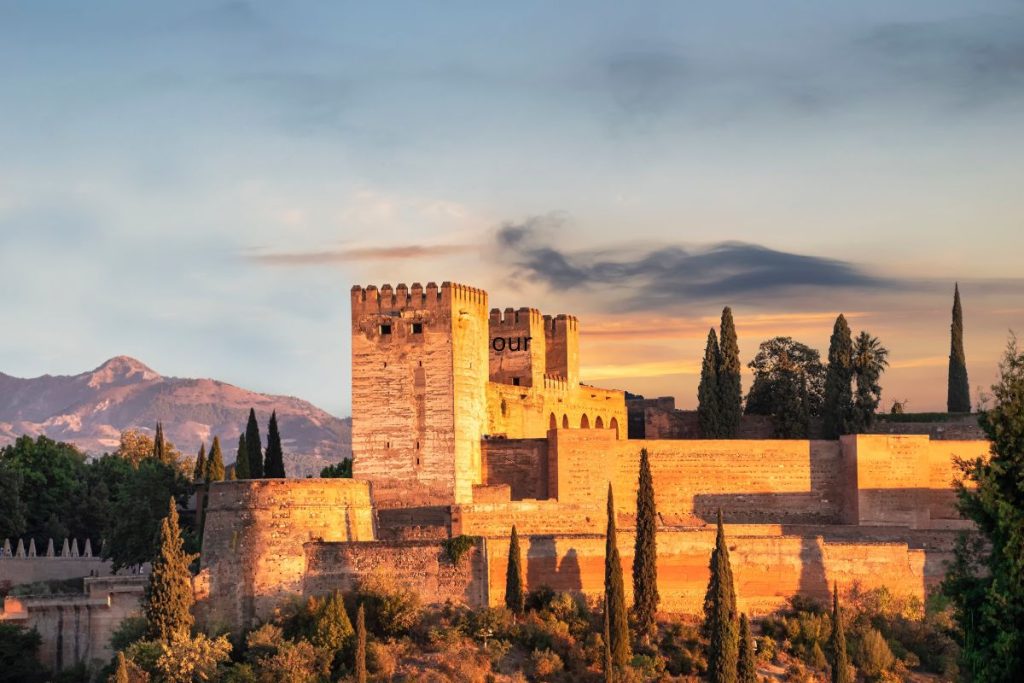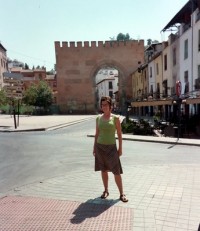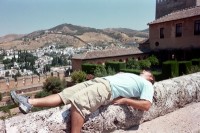While planning what was supposed to be a trip to Spain and Morocco, I scheduled a 1-day stop in Granada, Spain. After sampling the sights, sensations, and savory cuisine of Granada for one afternoon, we decided to prolong our stay. Well, we liked it so much that we never ended up making it to Morocco on that trip. What could possibly cause us to rearrange our itinerary you ask? Was it the majestic Nasrid Palace Alhambra, the Moroccan bathhouses, or the 5-star restaurants? A combination, most definitely.

Given its proximity to North Africa, many elements of life in Granada are influenced by Moroccan culture. Our first evening, we strolled up to the Alcaicería, an open-air bazaar that used to serve as a Moorish silk market.
The current structures were built in 1845 after a fire in 1843 destroyed the first marketplace, but they have retained the original Moorish style. As we wound through the narrow streets lined with stalls full of silk scarves, leather goods, cast-iron pans, and Amazigh (Berber) shoes, we chatted with the stall owners, just as eager to tell us about what to do in Granada as they were to sell us their wares.
Alcaicería is located right next to Granada’s massive Cathedral in the center of the city. It’s history is as impressive as its size, considering that it was built over the course of 181 years (1523 – 1704), with different types of materials, and in multiple architectural styles. Construction ceased during the plague, and several architects were involved with the project at different times, including Juan Gil de Hontañón, Enrique Egas, and Diego de Siloe.
Similar to the majority Christian buildings in Granada, the Cathedral was built on the site of the former Mosque.
The Alhambra, a Moorish citadel and palace, is undoubtedly the most famous site in Granada. Marilyn McFarlane does a great overview of it in her post, Spain’s Sublime Alhambra, so I won’t say much more, except that you absolutely must lay eyes on the jewel that is the Nasrid Palace while you are there.
If you’re a foodie like me, you never really need an excuse to stop for a tinto de verano (red wine mixed with fizzy lemon soda, pescalitos (tiny fried fish- gobble them up like fries!), or Moroccan-inspired lamb meatballs with pomegranate seeds (“granada” means pomegranate in Spanish- a symbol of royalty). Not to worry, there are plenty of traditional restaurants to suit your fancy. For a good regional cuisine dinner, I recommend the restaurant at the Hotel Posada Pilar del Toro.
Whatever you do, don’t miss the opportunity to take a late-night Arab bath. Of course, a communal bath (with swimsuit!) and massage is great any time of day, but there was something magical about strolling to the bath house Al Andalus at 11 in the evening, gazing at Alhambra high on the hill. After soaking for an hour in water infused with essential oils, we enjoyed ½ hour massages, before slipping on soft cotton robes and sipping mint tea in the moonlight. Can you see why we stayed so long?
I wish we could have stayed longer to try more of the things to do in Spain’s Granada, but alas, I will be back!




Steve B.
Sunday 1st of January 2012
After living in Granada for 3 months, I think some of the best cuisine is at a tapas bar west of the Cathedral. The place is called Poë, and I'd pick their tapas over a lot of other restaurants in the city.
nancy todd
Friday 9th of December 2011
Navas Street in Granada is filled with restaurants. My theory on how to pick a restaurant? Never choose one with those horrid plastic chairs. Quality chairs? Quality restaurant.